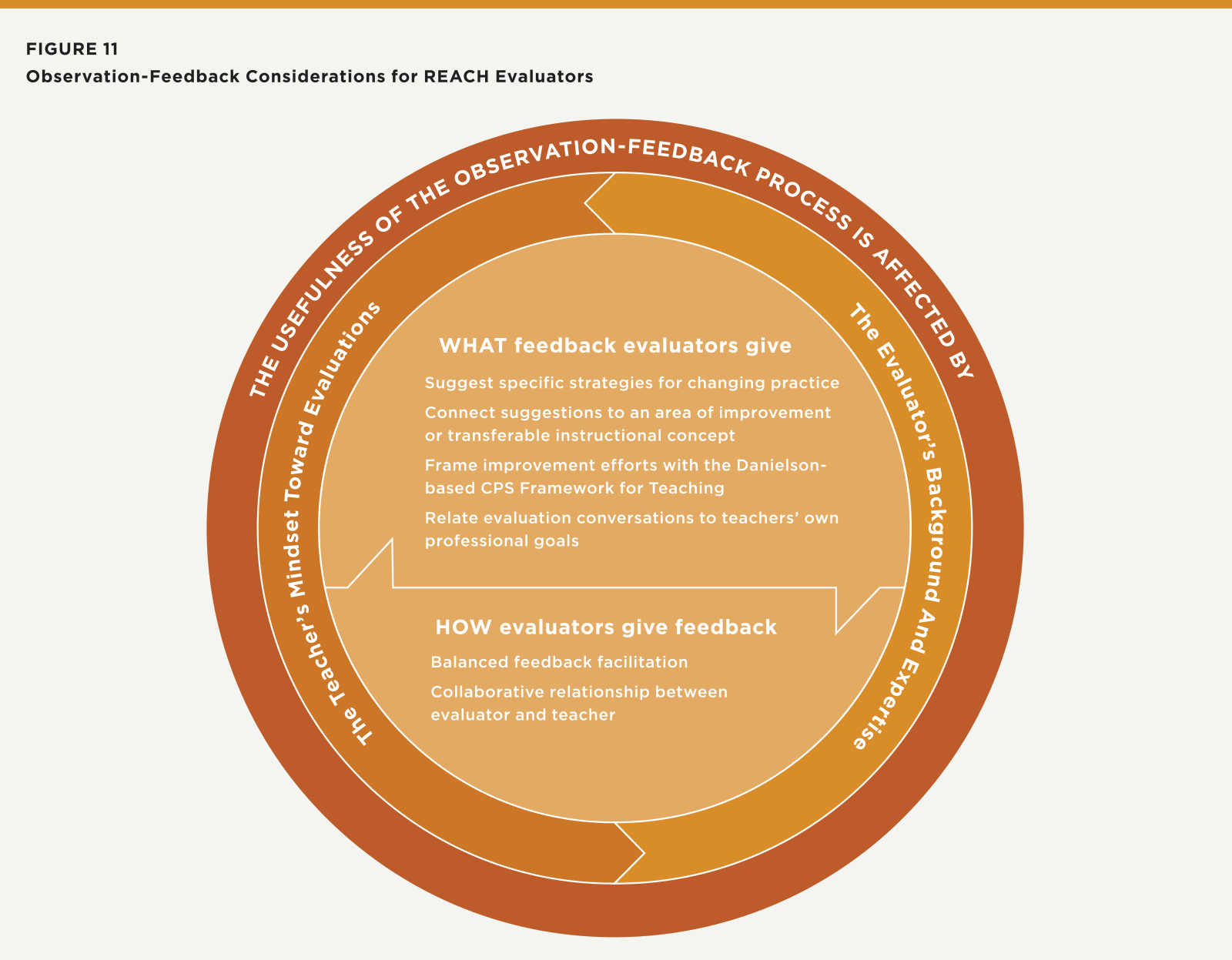1. What are teachers' and administrators’ perceptions and opinions of REACH after five years of implementation?
2. What feedback did teachers report they found most useful?
3. What proportion of teachers received high and low ratings under REACH, and how did that change over time?
4. How many low-rated teachers exited CPS or switched schools under REACH, compared to high-rated teachers?
5. How have classroom assignments within the school changed under REACH?
In response to the 2010 Illinois Performance Evaluation Reform Act and amid a national movement to reform how teachers are evaluated, CPS implemented the REACH (Recognizing Educators Advancing Chicago’s Students) teacher evaluation system in 2012-13.
Evaluations can be expensive and time consuming for districts to implement, but are they achieving policy goals and leading to improved instruction and student learning? Our findings show that most CPS teachers and administrators agree that teacher evaluation improved instructional practice and student learning, which suggests that teacher evaluations can be effective given the right conditions.
This series of three briefs extends previous Consortium research on early REACH implementation and investigates the REACH evaluation system five years after the 2012-13 rollout. The series addresses:
- Teachers' and administrators’ perceptions and opinions of REACH
- Evaluator feedback and teachers’ instructional change
- Evaluation ratings and teacher mobility
Key Findings:
- Most CPS teachers (83 percent) and administrators (93 percent) reported that REACH improved instructional practice.
- Approximately 70 percent of CPS teachers and administrators agreed that the teacher evaluation system improved student learning.
- About 60 percent of teachers and 70 percent of administrators were satisfied with the REACH evaluation process as a whole, but there is wide variation in teachers’ satisfaction with REACH across schools.
- Teachers generally reported that the REACH observation process accurately represented their teaching practice. However, what and how evaluators gave feedback mattered. Teachers said that for feedback to be meaningful and useful, it must be specific, actionable, task-focused, relevant, balanced, and collaborative.
- Nearly 9 in 10 CPS teachers received one of the top two evaluation ratings in 2016-17.
- The lower the evaluation rating, the more likely teachers were to leave their schools.
- More than one-half of teachers who received “unsatisfactory” ratings exited CPS and an additional 16 percent switched schools within CPS.
- Teachers with low value-added measures (VAMs) were less likely than teachers with high VAMs to be teaching in a tested grade/subject the subsequent year.






